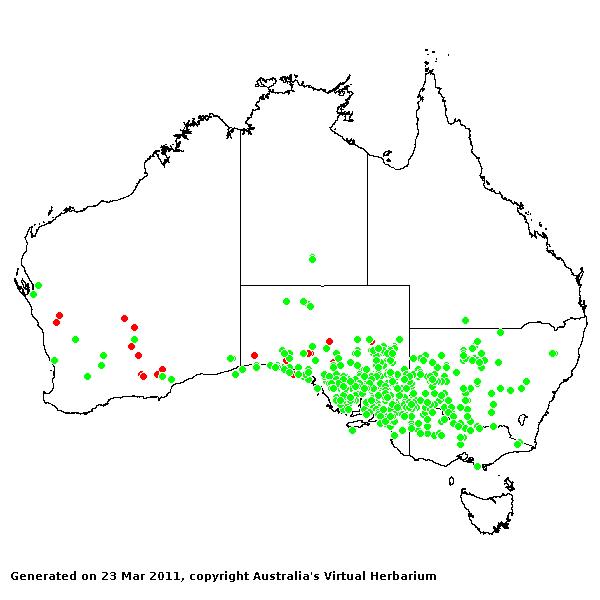Schismus* Ess. Agrostogr. 73 t.15, fig. 4 (1812).
Derivation:. From the Greek schisma (cleft), referring to the lemma tip.
Key references (keys and floras):. C.A.Gardner, Flora of Western Australia 1 Gramineae 58–60 (1952); M.Lazarides, Flora of Central Australia 440 (1981); J.P.Jessop, Flora of South Australia 4: 1968 (1986); B.K.Simon, Key to Australian Grasses 154 (1993); S.W.L.Jacobs and K.L.McClay, Flora of New South Wales 4: 548 (1993); N.G.Walsh, Flora of Victoria 2:544(1994); D.Sharp and B.K.Simon, AusGrass (2002); K.Mallet (ed.), Flora of Australia 44B: Poaceae 3: 34–35 (2005); J.P.Jessop, Grasses of South Australia 311–312 (2006); S.W.L.Jacobs, R.D.B.Whalley & D.J.B.Wheeler, Grasses of New South Wales, 4th ed, 364 (2008).
W.D.Clayton & S.A.Renvoize, Genera Graminum (1986), genus (276).
Naturalised. 5 species, from Africa, Mediterranean to northwest India. 2 species in Australia, WA, NT, SA, NSW, and Vic.
Habit. Annual or perennial (weakly, infrequently), tufted (rarely) or decumbent (low). Leaf blades narrow. Ligule a fringe of hairs.
Inflorescence. Inflorescence paniculate.
Spikelets. Spikelets slightly laterally compressed, solitary, pedicelled; with naked rachilla extension. Fertile spikelets slightly laterally compressed, falling with glumes (falling entire) or disarticulating above glumes.
Glumes. Glumes more or less equal, shorter than spikelet to about equal to spikelet, long relative to adjacent lemmas, awnless, similar (herbaceous-membranous, the margins hyaline). Lower glume 5–7 nerved. Upper glume 3–7 nerved.
Florets. Fertile florets 4–10. Lemmas similar in texture to glumes (herbaceous, the lobes and margins hyaline), incised (to merely emarginate), deeply cleft (bifid) or not deeply cleft (emarginate), muticous or mucronate (from the sinus) or awned, 7–9 nerved, not keeled. Awns when present, 1, from a sinus, non-geniculate, much shorter than body of lemma to about as long as body of lemma. Palea relatively long, 2 nerved, 2 keeled. Distal incomplete florets underdeveloped. Lodicules 2. Stamens 3. Stigmas 2. Grain yellow, shiny, obovate, compressed dorsiventrally. Hilum short. Embryo large. Endosperm hard.
Kranz Anatomy. C3.
2n = 12, 2 ploid, commonly adventive.
Habitat. Xerophytic. Species of open habitats.
Classification. Danthonioideae.
Notes. The genus is linked to Rytidosperma (Clayton and Renvoize, 1986).
Types Species. S. barbatus (L.) Thell.
Biogeographic Element. Clifford & Simon 1981, Simon & Jacobs 1990: Naturalised.


